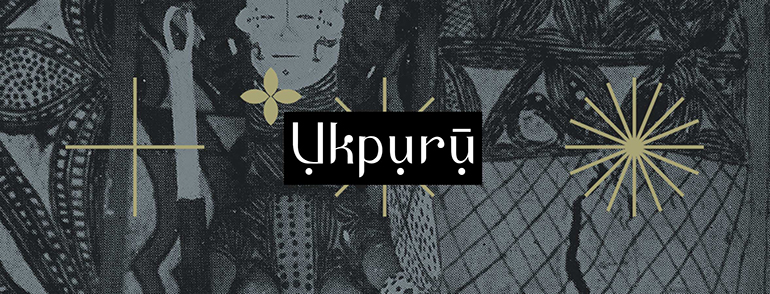 Photo: Sinhalese people and an Ikwere Igbo boy photographed during a Rumuji Owu play by G. I. Jones, c. 1930s, MAA Cambridge.
Photo: Sinhalese people and an Ikwere Igbo boy photographed during a Rumuji Owu play by G. I. Jones, c. 1930s, MAA Cambridge.
Have you heard of the lungi? This plaid material commonly known as madras is a textile from India that has become ethnic wear in southeastern Nigeria, known as George (Jịọjị) by the Igbo and injiri by the Kalabari. This is a brief history.
The lungi has been worn in India for centuries particularly in the south, today in India the lungi is relatively cheap and widely made and is associated with the working class. With British colonialism, the lungi was exposed to empire.
Madras, now Chennai, was a British East India Company post centred on the Fort St. George factory in the 17th century. It became the principal weaving and distribution spot for the lungi when empire exponentially increased its amount of weavers, marketing the madras worldwide.
 Fort St. George, 19th century.
Fort St. George, 19th century.
The Kalabari claim that the injiri (madras) was first introduced to the area by the Portuguese.
 Pelete bite Kalabari cloth is made by women removing some of the thread on injiri. British Museum.
Pelete bite Kalabari cloth is made by women removing some of the thread on injiri. British Museum.
The origin of the name ‘George’ is unknown, but since Fort St. George was the founding settlement of Madras, the main centre for the ‘George,’ it may be possible that the cloth got its name from the factory as it was traded in what became southeastern Nigeria.
The British brought this cloth through trade in the delta areas of what became southeastern Nigeria, in turn the George was traded deep into the Igbo interior where it became the primary clothing for many and a prestige cloth regarded as a sign of wealth and success in trading.
 What may be Ngwa Igbo people wearing 'George,' Indian madras, in this photo noted by Northcote Thomas as being taken near Aba, c. 1912-13. MAA Cambridge.
What may be Ngwa Igbo people wearing 'George,' Indian madras, in this photo noted by Northcote Thomas as being taken near Aba, c. 1912-13. MAA Cambridge.
It was not long before weavers, particularly those in Akwete, were able to copy the weave of the lungi and started to locally produce imitations while also adding elaborations. Imported madras, ‘real India,' seems to have remained the highly prized kind.
 Akwete woman's work, British Museum.
Akwete woman's work, British Museum.
The Kalabari used injiri to cover ancestral shrines and the cloth is so meaningful that mothers are gifted with a piece after birth. The Igbo tie George on ancestral figures, some masquerades, and wear it for festivals. It is a prized heir loom in both cultures.


No comments:
Post a Comment